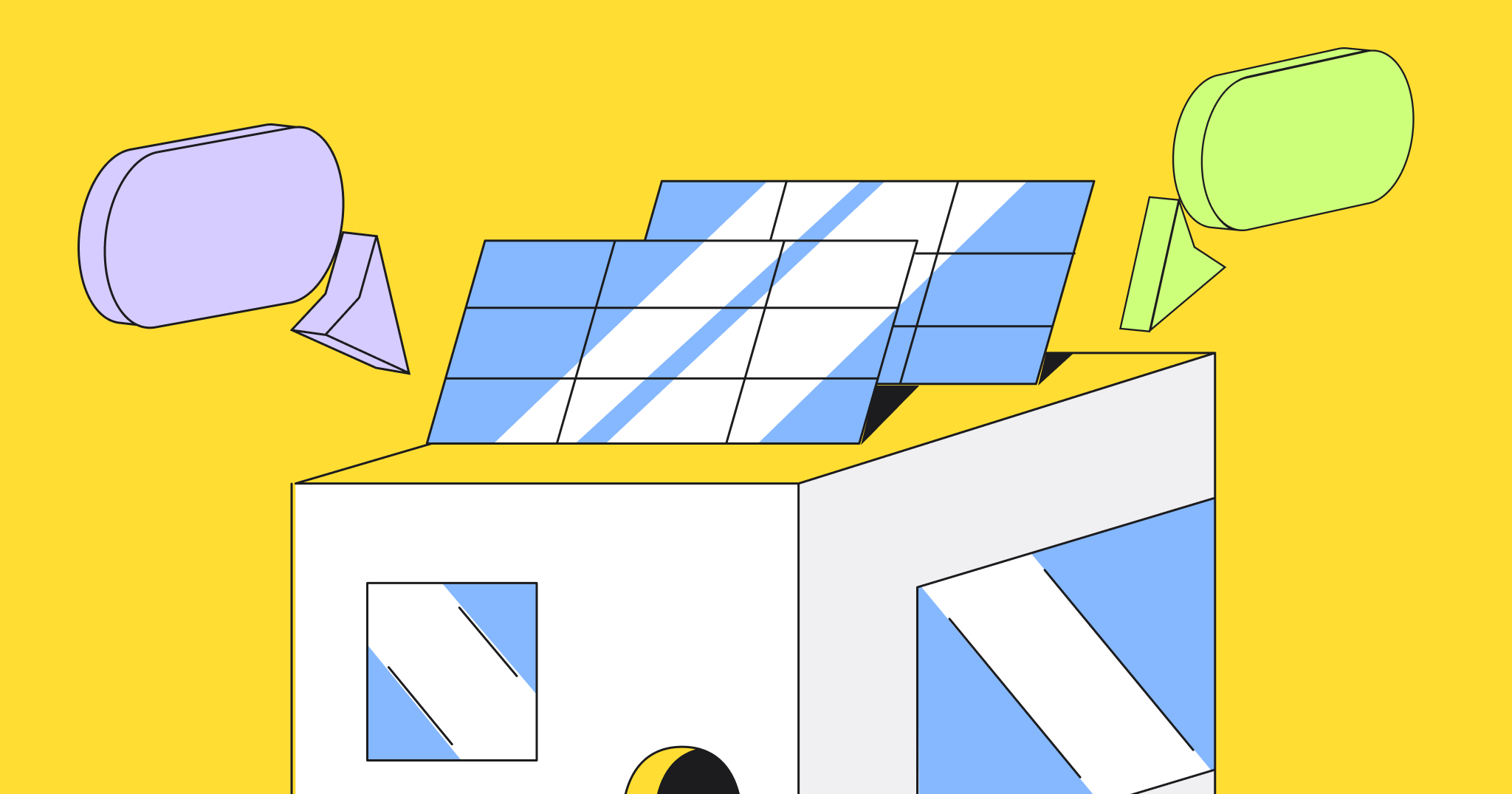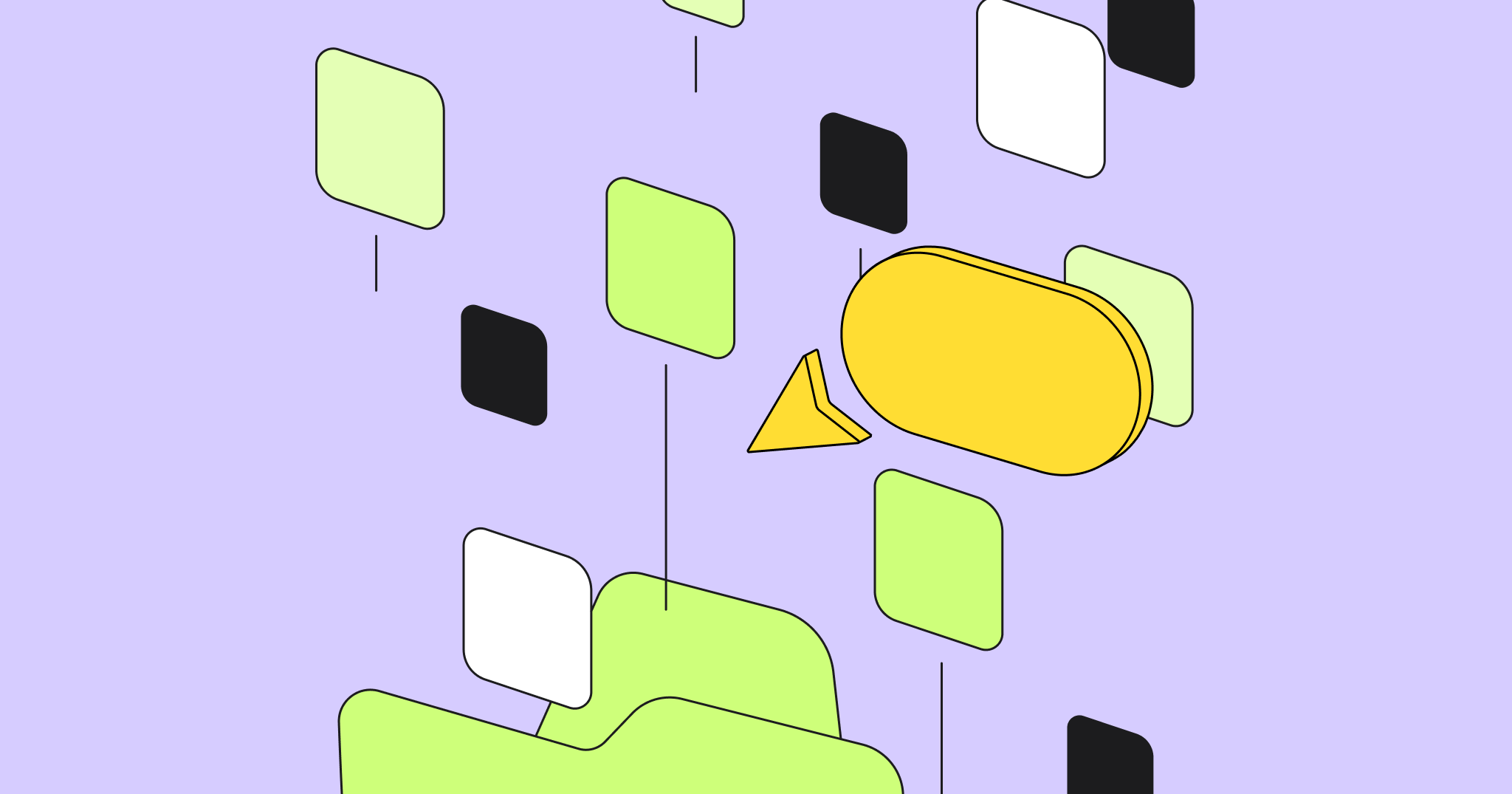Leading tech companies are often the first to test out innovative methods of work, so it’s no surprise that they’re also looking for ways to collaborate efficiently on complex projects. We talked to Prianka Rayamajhi, an experienced Product Design leader, and asked her about the best practices for visually documenting and collaborating on cross-functional projects at Copper (formerly ProsperWorks), the #1 CRM for G Suite and Google.
The Product
team at Copper
I work with a product team that consists of your typical engineers and PM. I also help assist with other product teams that have distributed team members. We work in a lot of different ways so a tool like Miro helps us to create a shared understanding across the many teams in product and across our organization. An example of this for our product team is documenting our process from our mission and vision and how it funnels down to our research briefs, our research data, insights, and even into executing on that vision. Our product design team has two managers and four designers. We have two people each, and we report up to the VP of Design. At the moment, we’re all in San Francisco, but we’re exploring what it looks like to be a distributed team, and I think it’s really important to have the right tools for that.
Profile
Prianka
Rayamajhi
is the Product Design Manager at Copper, where she leads the design practice by streamlining product practices with a user-centered and lean approach. Before joining Copper, Prianka worked as a Product Designer at Pivotal Labs. Follow Prianka on LinkedIn.
Better
collaboration
for distributed
and collocated
teams
My product manager just moved to New York, and we have folks working distributed at times as well. I’ve developed some strategies for making this arrangement work. It’s setting rituals in place to make sure that when we work together, we’re making distributed people feel as if they’re in the same room. That means being able to share information quickly. Miro helps me and my team keep everything in one place. As much as I love G Suite, files get lost very easily. Miro becomes a sitemap of our data because you can copy the link and have a thumbnail almost instantaneously.
Standups
and video calls
Daily standups are always great, and having a digital space for them is important. Something like Miro where you can always have a place to jam out on ideas. I also like using Hangouts or Zoom to be able to share information or see each other. This gives you the sense that then there’s almost a physical space to collaborate in.
Using Miro
to promote alignment
Aligning on common goals, visions, and missions helps to drive the success of our team. When I first joined my product team, the engineers were working on a lot of different things, no one was working on the same project. The engineers really felt like there wasn’t anything they could get behind or get context on for doing things, it felt very fragmented. We started using Miro and I ran a couple of workshops on our mission and values and goals as a team, and what we wanted to accomplish so we could get excited about it.
The board we use is really cool because we can throw everything in and we can follow it, we can easily see what we’re working on. We started with our company mission, and we were hoping to accomplish this team vision. It was really awesome to align all this.
This gave our team purpose. Based on what we learned and what we were excited by, we ended up having a more impactful mission for our team. From there, we were able to create kickoffs and personas, and we were able to think about our assumptions and really document our research process. That was really powerful for us.
How Copper design team
is aligning around
a shared vision:
“Copper lets each product team build for the vision, so we have a lot of autonomy.”
“Having a source of truth or a living history of its accomplishments is vital for a team.”
“Daily standups are always great, and having a digital space like Miro for them is important.”
Creating a single
source of truth
We have our regular rituals like grooming sessions and retros, and areas where we’re doing reflections, but also focusing on the work ahead. So we pull this up and we’re like, “Hey, are these things still true? Is this no longer true?” We used G Suite and it was so hard to find the information that we needed, especially when we worked across the organization. So Miro makes it really easy to have everything show up there, and you can quickly access it. It’s been a source of truth for our organization, and for our product team.
Having a source of truth or a living history of its accomplishments is vital for a team. Having some sort of outline of your team’s process is really going to give your team purpose. As we move into this world of Google saving everything and things automagically happening, we tend to think we have access to all the information. I think it’s important to start mapping out those sorts of processes.
When you go back to it, that’s when you can reflect and change and share things. Once that becomes embedded and everyone starts doing it, that’s when you become more successful. I feel like it’s really helped us as a design team to put in our personas and our customers’ perspectives, and then, “Okay, it’s been three months, what’s changed? You’ve been talking to customers, is this still the same?” Having that information quickly and organized will go a long way to grow your practice.
Miro
use cases
at Copper
Standups
Outlining the team’s mission, vision and values
Documenting user journeys, personas, and customer segmentation data
Ideating on Design Practice and Management strategies
Lightning Crit!
https://miro.com/app/embed/o9J_kySw2gs=/?autoplay=yep This framework helped the product team find purpose and rally around a cause that they could all contribute to.
Work culture
at Copper
We have a lot of autonomy. We know about the top-down values and focuses, and then from there, Copper lets each product team build for the vision. There are a lot of opportunities to go wide and do discovery and explore things. Our software is a service, we work in Agile, and we work as a balanced team. In my team, we’re very collaborative, so when we go into a project kickoff, we try to understand what the goals are and what we’re trying to do. From there, we bring everyone into the process.
We have QA and engineers dedicated to the team, so we have them sit in customer calls and help us synthesize the information — we do this with survey data, more for design strategy, but not in our product team. We do take photos of the affinity mapping and upload into Miro along with key insights. Then we go into sketching ideas together. In some ways, we’re almost wearing very similar hats. Engineers have solutions to everything—we’re trying to leverage that! It really helps us. So by the time we start getting into scoping, we’re starting to really understand the user needs and what has high user value. We also know what our time frame is.
That collaboration with our team really helps us to get the jobs that we need to succeed, and also be hyper-focused. When I get down to execution, engineering can say, “Hey, we can’t make this type of change due to our code base. But we can do this because I understand what you’re trying to do.” It works out well for me because they already have the context and know what needs to be done. We’re pretty lean and we try to measure and learn and continue that iterative process.
Recurring rituals
in the Copper team:







We do weekly check-ins and let people vent and talk through things. We don’t wait for something to happen. We help people figure out the journey. With my reports, they’ll come in and say, “I don’t think this is the right thing we should be approaching.” So I’ll say, “What can I do to support you and help you talk with your team? Maybe we should take a step back?” That helps level set.
We also have rituals like critiques, we do product reviews often, we demo our work at All Hands. We have a product All Hands and a design All Hands. We usually say, “Here’s this feature that we’ve been working on. We’ve validated it, we feel like it’s an innovative feature, here’s the metrics and here’s how it bubbles up to our company’s goals.” We’ll get qualitative and quantitative data on that as well.




